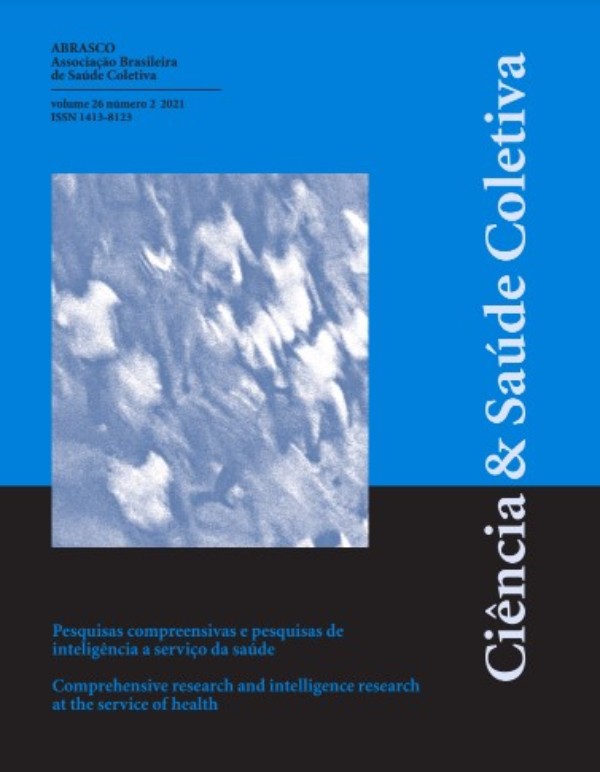Resumo (abstract):
We evaluated the feasibility of the menu adequacy regarding the nutritional constraints established by the National School Feeding Program (PNAE) and its relation to the cost. Each menu accounted for a given food combination within each food group. A diet optimization model comprising each set of foods was designed to obtain food quantities in order to meet the exigences of the PNAE at the lowest cost (menus with 20% and 30% of dietary reference intake for energy, macronutrients, calcium, iron, magnesium, zinc, vitamins A and C, also restrictions for sodium, saturated and trans fats, and added sugar). There was no feasible solution that accommodated all nutrient targets. Limiting components were calcium, sodium, and carbohydrates; but the menus were adequate for the other nutrients. There was a positive correlation between the menu cost and the frequency of meat and fruits, and a negative correlation with the contents of sodium and carbohydrates, and with the frequencies of rice and beans. The probability of obtaining carbohydrate adequacy was close to zero when the meat frequency was higher than one serving per week. In conclusion, it is unlikely to obtain menus that meet all the requirements of the PNAE.
Palavras-chave (keywords):
school feeding, nutrients, menu planning, linear programming, nutritional recommendations.
Ler versão inglês (english version)
Conteúdo (article):
Feasibility in meeting nutrient amounts of the National School Feeding Program
and its relationship with the menu cost
Abstract
We evaluated the feasibility of the menu adequacy regarding the nutritional constraints established by the National School Feeding Program (PNAE) and its relation to the cost. Each menu accounted for a given food combination within each food group. A diet optimization model comprising each set of foods was designed to obtain food quantities in order to meet the exigences of the PNAE at the lowest cost (menus with 20% and 30% of dietary reference intake for energy, macronutrients, calcium, iron, magnesium, zinc, vitamins A and C, also restrictions for sodium, saturated and trans fats, and added sugar). There was no feasible solution that accommodated all nutrient targets. Limiting components were calcium, sodium, and carbohydrates; but the menus were adequate for the other nutrients. There was a positive correlation between the menu cost and the frequency of meat and fruits, and a negative correlation with the contents of sodium and carbohydrates, and with the frequencies of rice and beans. The probability of obtaining carbohydrate adequacy was close to zero when the meat frequency was higher than one serving per week. In conclusion, it is unlikely to obtain menus that meet all the requirements of the PNAE.
Key words: school feeding, nutrients, menu planning, linear programming, nutritional recommendations.
Introduction
The National School Feeding Program (PNAE) has the aim of ensuring adequate nutrition for students enrolled in public schools nationwide. Regarding financial resources, PNAE supplies different per capita amounts to meet the nutritional needs of diverse ethnic groups, based on age, school category, and social vulnerability status. Currently, government funding for meals varies from R$0.32 per capita/day for Youth and Adult Education to R$2.00 for the Full Time High School Development Program. Cities that adhere to the PNAE scheme are responsible for making up the necessary costs to guarantee proper implementation of the program.
Among the rules for implementing the program, of particular note are the following facts: menus have to (i) be planned in accordance with minimum nutritional requirements, that vary from 20% to 70% of the recommended daily intake (RDI), according to school category; (ii) meet energy, carbohydrate, protein, lipids, fiber, vitamin A, vitamin C, calcium, iron, magnesium, and zinc recommendations; and (iii) provide at least three servings of fruits and vegetables and no more than two servings of dessert per week.
Several studies have assessed the suitability of the menus, both qualitatively and quantitatively, and demonstrated how difficult it is to design a menu that meet the program’s nutritional requirements within the allowed budget1-6. The study “Nutritional composition of school meals in Brazil: an analysis of menu samples" assessed a sample of 1,064 menus from schools under the PNAE scheme, and highlighted inadequacies across all nutritional groups. At least 50% of the menus did not reach the nutritional target for most nutrients5.
Indeed, menu planning for school meals is a complex task, given budget constraints. However, the nutrient content of menus can be optimized by the selection of key nutrient sources and culturally acceptable foods within the cost constraints. Data optimization through linear programming is a helpful tool to evaluate feasibility in various contexts (such as the quantity, type, and price of food), as well as in finding the best mathematical resolution for complex problems involving multiple variables and constraints (such as menu costs and nutrient adequacy)7,8. The aim of this study, therefore, is to evaluate the feasibility of meeting the PNAE’s nutritional requirements, as well as to assess the correlation between menu costs and menu adequacy.
Methods
Optimization models with linear programming
Data optimization models were used to design weekly menus that met the PNAE’s nutritional requirements as economically as possible. In cases where no feasible solution presented itself (where no mathematical solution accounted for all nutritional constraints), an additional term was introduced to the model to minimize the deviance between the target nutrient amount and the optimized nutrient amount9. This term represented the difference between the target for the nutrient n and the maximum amount possible when the target was unattainable. For example, for a given nutrient for which the requirement was 100mg, a negative deviance of 10mg referred to the providing of 90mg rather than 100mg of this nutrient. Likewise, for dietary components which required an intake limit (for example, sodium and saturated fat), a positive deviance of 10g referred to a menu providing 110mg rather than 100mg of this component. The objective function is described as follows:
minimize y=∑_(i=1)^(i=g)▒(Q_i^otm∙price_i ) +∑_(n=1)^(n=N)▒|(〖nut〗_n^opt-〖target〗_n)/〖target〗_n |_
where: g is the number of foods, Q_i^otm is the quantity of the food i in the optimized menu, i is the price per kg, and 〖nut〗_n^opt is the closest amount of the nutrient n from the target. This objective function minimized menu costs as well as positive and negative deviances.
Model inputs
- Foods: refers to the foods that may comprise the weekly menus. A list of foods was obtained from a grocery list in a town of the state of Rio de Janeiro to compose the menus for the second semester of 2017. Mixed foods were considered as a single food – for example, the optimized rice quantity for the menus took into account the oil and salt used in the preparation of the rice, as well as its nutritional composition. Likewise, for mixed foods such as “coffee with milk”, a single food item was created, for which the nutritional composition was the mean of the included ingredients weighted by proportion for each item. This procedure was adopted to avoid the model creating menus comprising foods that are not usually eaten without accompaniment (for example, bread is included in the menu with margarine, butter, or cheese). A food list comprising 86 items was used in this study.
- Food prices: food prices were obtained from a pubic bidding process that took place in the first semester of 2017. The prices refer to the food as purchased (raw, with its non-edible parts). For mixed foods, the price is the mean price of the items or ingredients weighted according to their proportion – for example, milk with chocolate powder was defined as comprising, per 100g, 80g of whole milk and 20g of chocolate powder.
Supplementary material regarding portion sizes for each food/mixed food type, as well as the food prices, can be accessed online at www.nebin.com.br/pnae.html.
Model constraints
- Nutrient adequacy: refers to the PNAE’s set of nutritional requirements. In this study, we used as an example the percentage of the recommended daily intake (RDI) for elementary school children – students aged from 6 to 10 years: (20% RDI, maximum of 400mg of sodium for 1 meal/day; and 30% RDI, maximum 600mg of sodium for 2 meals/day – Table 1). Moreover, constraints for free sugar (≤10%kcal), trans fats (≤1%kcal), saturated fat (≤10%kcal), and total fat (15%-30% kcal) were also introduced into the models.
Menu elaboration
- Food selection. The foods were grouped into fruits; vegetables; beans and legumes; cereals; meats; milk and dairy; cake, cookies, and breads; and desserts. As the menus could comprise a wide variety of foods within each group, the number of foods selected for each group varied according to the constraints: milk and dairy products (0 to 5 times/week); cake, cookies and breads (0 to 5); fruits; vegetables (0 to 10 times/week); rice and beans (0 to 4 times/week); pasta (0 to 2 times/week); desserts (0 to 3 times/week); and juices (0 to 3 times/week). Concerning the fruits and vegetables groups, each food item was allowed twice a week. The combination and frequency of foods in each weekly menu was randomly selected from a full list of previously registered foods, each time the model was performed (30,000 models from 30,000 draws to cover a broad range of possibilities of food and frequency combinations). Of the selected foods, the optimization model found the amount of each, in grams, to meet nutritional requirements at the lowest cost. In the menus comprising only one meal (lunch), foods typically eaten at breakfast, such as breads, cakes, cookies and some milk-based preparations, were not included.
The food quantities, as purchased, were converted into “as consumed” quantities using appropriate cooking and yield factors. For each food, the centesimal composition of energy and nutrients was calculated using a food composition data base developed for national surveys.
Linear programming models were performed with the Simplex algorithm, using the PROC OPTMODEL in the SAS OR 9.4. The Spearman’s correlation between the menu cost, the content of the limiting nutrients, and the weekly frequency of the food groups, was calculated.
Results
- 20% of RDI Menus
Considering all models with fixed restrictions in terms of nutrient content, there was no feasible solution found that accommodated all restrictions. After relaxing the nutritional constraints, calcium, sodium, and carbohydrates were identified as the most limiting nutrients (nutrients that caused model unfeasibility and which were not amenable to goal-achievement). All the remaining components (calories, saturated and trans fats, fiber, added sugar, vitamin A and C, zinc, iron, and magnesium) were adequate in the menus. The fifth percentile of sodium content across the menus was 530mg; and the 95th percentile for calcium and carbohydrate was 110mg and 50mg, respectively. In total, 3,016 weekly menus were obtained from 30.000 optimization models. Daily per capita costs ranged from R$0.56 to R$3.65 (an average of R$1.55); the cost was found to be correlated with meat and fruits frequency, and inversely correlated with sodium and carbohydrate content, as well as rice and beans frequency. The probability of obtaining appropriate intake (the proportion of menus enabling adequate intakes in relation to total number of menus) for calcium and sodium was similar across the meat, vegetables, fruits, and desserts frequencies for the week. However, the probability of obtaining carbohydrate adequacy was close to zero when meat frequency was higher than once a week (Table 2).
- 30% of RDI Menus
As in the 20% of RDI menus, there was no feasible solution found that accommodated all model constraints. Likewise, limiting nutrients were calcium, sodium, and carbohydrates. A total of 1,097 weekly menus were obtained from 30.000 models. The fifth percentile for sodium content across the menus was 635mg, and the 95th percentile for calcium and carbohydrate was 267mg and 75mg, respectively. Daily per capita cost ranged from R$1.12 to R$4.61 (giving an average of R$2.57); this was positively correlated with meat and fruits frequency, and inversely correlated with calcium, sodium, and carbohydrate content, as well as rice and beans, bread, cakes and cookies, and milk-based foods frequency. The probability of obtaining calcium and sodium adequacy was similar across weekly food frequencies within the groups. The probability of obtaining carbohydrate adequacy was close to zero when meat frequency was higher than once a week (Table 3).
Discussion
This study demonstrates that it is unlikely that a combination of foods meeting all PNAE requirements can be created in a menu. Thus, it is probable that a large proportion of school menus will fail to meet the program’s demands.
Solutions were only possible in models that allowed for flexibility regarding calcium and sodium requirements – that is, those that added a deviation term in the objective function. Regarding calcium, studies have described breakfast as the meal allowing for greatest provision of this nutrient, once it usually contains milk-based foods10. In the 30% of RDI menus, milk-based foods contributed on average 60% of total daily calcium (data not shown). For this reason, meeting adequacy levels in 20% of RDI menus, which do not include breakfast, is more difficult than doing so in 30% of RDI menus. Thus, the assumption of the same percentage of RDI for all nutrients should be revised taking into account the composition of foods that typically compose meals. However, it is important to highlight that more than 90% of the Brazilian population has an inadequate daily intake of calcium11,12 and that adequate levels remain difficult to achieve, even allowing for changes in eating patterns13. Meeting all nutritional requirements would involve a menu composition that may prove unrealistic, and which might violate the program’s principle of respecting local food preferences. Regarding sodium, results should be interpreted with care, since the largest contributors of sodium, rice and beans, provide on average 55% of the total RDI (data not shown). Thus, the less sodium used in cooking, the greater the likelihood of feasibility. The requirements for carbohydrate content also call for flexibility: carbohydrate-adequate menus were only obtainable in menus with low meat frequency, with a probability of adequacy in menus involving up to one portion of meat per week. The greater the frequency of meat on the menu, the more calories are derived from fats and protein, thus limiting those from carbohydrates.
However, it is not possible to directly compare these results with studies that evaluated the adequacy of menus. The current study is theoretical, presenting possible solutions within a spectrum of foods and their frequency of consumption, and compatible with the standard foods and menus described in the literature. The most comprehensive study to date, which evaluated 1,604 menus in Brazil5, described inadequacies for all macronutrients and micronutrients, but did not allow for associating the food composition of menus with the inadequacies found.
The large variation in menu costs implies that it is possible to obtain menus for most components at a lower cost. In general, menus involving more meat and fruits were the most expensive, but not necessarily any more adequate. The quantity of vegetables did not influence the cost; therefore, in a budget-constrained scenario that limited the supply of fruit, a greater provision of vegetables could be an interesting option.
The financial resource transfer to cities which adhere to PNAE (R$0.36 per student/day for this cycle – a basic education for students in the age range 6 to 10 years, for both 20% and 30% of RDI menus) on average corresponds to 23% (one meal) and 14% (two meals) of the total cost of the menu per capita/day. Although both 20% and 30% of RDI menus are meant to be planned with the same PNAE funds, the latter was found, on average, to be 65% more expensive than the former. Therefore, especially in cities, which have a greater budget constraint, there will be a very low probability of providing nutrient-adequate menus.
Some methodological points about the use of this model should be mentioned. First, it should be noted that the optimization model finds the best mathematical solution for a defined problem, the assumptions of which are derived from the literature or from personal judgment. We opted to analyze a range of food quantities and food combinations according to a defined weekly frequency for each food group. Consequently, it was possible to verify the degree of adequacy within a realistic menu composition. Second, the foods were randomly selected; in a real scenario, food selection is in accordance with local preferences, which may limit the ability to make costs flexible. Although the food list was obtained from a single town, it comprised the most commonly consumed foods in Brazil14, and those which are already present in school meals menus around the country5. Finally, although the food prices specified refer to the end of the first semester of 2017, the study’s conclusions are still valid, given that funds transferred to the municipalities have not changed.
The applied optimization models can also be used to assist with menu elaboration. It is possible to customize the model for inclusion, exclusion, or modification of food items, the updating of prices, and for the adapting of constraints to meet local demands. For instance, the model can be set for a maximum cost and optimal nutrient content. If information on student food preferences is available, it is possible to include this in the model for more ‘realistic’ menus.
In conclusion, this study shows how unlikely it is to formulate menus that meet all PNAE nutritional requirements, particularly as they relate to calcium and sodium.
References
1. Issa RC, Moraes LF, Francisco RR, Santos LC, Anjos AFV, Pereira SCL. Alimentação escolar: planejamento, produção, distribuição e adequação. Rev Panam Salud Publica. 2014;35(2):96-103.
2. Abranches MV, Paula HA de A, Mata GMSC, Salvador BC, Marinho MS, Priore SE. Assessment of diet adequacy at public and private day care centers within the national program of school feeding. Nutrire: Revista da Sociedade Brasileira de Alimentação e Nutrição. 2009;34(2):43-57.
3. Neitzke L, Molina MDCB, Salaroli LB. Adequação nutricional da alimentação escolar em município rural – Espírito Santo, Brasil. Nutrire: Revista da Sociedade Brasileira de Alimentação e Nutrição. 2012;37(1):1-12.
4. Silva MMDC, Gregório EL. Avaliação da composição nutricional dos cardápios da alimentação escolar das escolas da rede municipal de Taquaraçu de Minas – MG. HU Revista. 2012;37(3):387-394.
5. Brasil. Ministério da Educação Fundo Nacional de Desenvolvimento da Educação. Diretoria de Ações Educacionais. Coordenação–Geral do Programa Nacional de Alimentação Escolar. Resumo Executivo. Composição nutricional da alimentação escolar no Brasil: Uma Análise a partir de uma amostra de cardápios – 2011. Brasília: Ministério da Educação Fundo Nacional de Desenvolvimento da Educação; 2012.
6. Rossato BM, Storck CR. Adequação Nutricional Da Alimentação Escolar Oferecida Em Instituições De Ensino Da Rede Estadual. Disciplinarum Scientia: Ciências da Saúde. 2016;17(1):73-8.
7. Maillot M, Vieux F, Ferguson EF, Volatier J-L, Amiot MJ, Darmon N.
To meet nutrient recommendations, most French adults need to expand
their habitual food repertoire. J Nutr. 2009;139:1721–7.
8. Maillot M, Monsivais P, Drewnowski A. Food pattern modeling shows
that the 2010 Dietary Guidelines for sodium and potassium cannot be
met simultaneously. Nutr Res. 2013;33:188–94.
9. Ferguson EL, Darmon N, Fahmida U, Fitriyanti S, Harper TB, Premachandra IM. Design of optimal food-based complementary feeding recommendations and identification of key "problem nutrients" using goal programming. Journal of Nutrition. 2006;136:2399-404.
10. Peters BSE, Verly-Jr E, Marchioni DML, Fisberg M, Martini LA. The influence of breakfast and dairy products on dietary calcium and vitamin D intake in postpubertal adolescent and young adults. Journal of Human Nutrition and dietetics. 2011;25:69-74.
11. Araujo MC, Bezerra IN, Barbosa FS, Junger WL, Yokoo EM, Pereira RA, Sichieri R. Macronutrient consumption and inadequate micronutrient intake in adults. Revista de saúde Pública.2013;47(1):S177-S189.
12. Fisberg MR, Marchioni DML, Castro MA, Verly-Jr, E, Araujo MC, Bezerra IN, Pereira RA, Sichieri R. Ingestão inadequada de nutrientes na população de idosos do Brasil: Inquérito Nacional de Alimentação 2008-2009. Revista de Saúde Pública. 2013;47(1):S222-230.
13. Santos Q, Sichieri R, Darmon N, Matthieu M, Verly-Jr E. Food choices to meet nutrient recommendations for the adult Brazilian population based on the linear programming approach. Public Health Nutrition. 2018;21(8):1538-1545.
14. Souza AM, Pereira RA, Yokoo EM, Levy RB, Sichieri R. Alimentos mais consumidos no Brasil: Inquérito Nacional de Alimentação 2008-2009. Revista de Saúde Pública. 2013;47(1):S190-195.
Acessar Revista no Scielo












